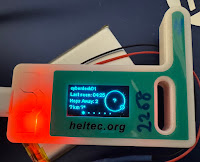Today I caught a train from Southern Cross bound for Bendigo. At Footscray a man got on. He looked confused and clearly had almost no English. He was asking if this train went somewhere but we couldn't work out where he meant.
Several passengers tried to figure out what he wanted and when we finally figured out that he wanted to go to Melbourne it was too late, the doors had locked and we were under way north.
Unfortunately for him, this was an express and the next stop was Sunbury, about 40km away.
He slumped into the seat next to me and I showed him on the map where we were headed. He said he had just arrived from Iran and was going to meet his boss. I said I was sorry to hear what is happening over there. Talking to the boss on speakerphone, he explained he'd caught the wrong train. The guy on the other side offered to pick him up! I explained that that might not be the best approach, better to catch the train back at Sunbury.
He asked if I was a technician? I said yes and he told me he was working for someone who worked for someone who was a technician.
The conductor came through checking MyKi cards and my new friend pulled out an infringement notice he'd been given earlier for not having a ticket. (He seemed to think that was a ticket). I spoke with the conductor on his behalf and explained the situation. He kindly let it pass.
When we got to Sunbury a bunch of fellow passengers got up and pointed to where he should go and explained what colour train he should catch to get back to Southern Cross. It was heartwarming to see.
Our train system is confusing, even for me, I can't imagine how hard it would be for a visitor with little or no English. Signs are poor, trains leave Southern Cross on different platforms and you can't find out from within the ticketed area.
I was proud of my fellow Australians today and their open and helpful attitude to a new Australian.










